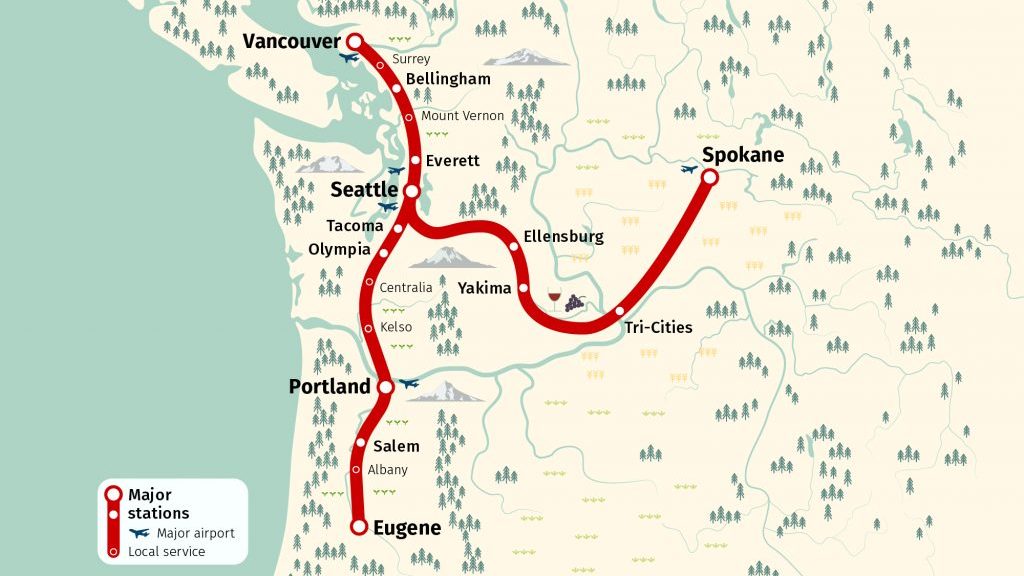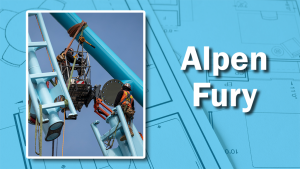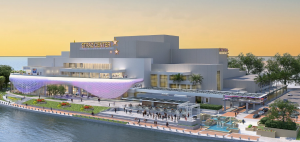VANCOUVER — Ultra-high-speed rail from Vancouver to Portland could reduce greenhouse gas emissions, generate billions of dollars in economic growth and create thousands of jobs, a new business case study shows.
“This study is part of the necessary good work that’s being done to give us a clearer picture of the feasibility of ultra-high-speed rail service between British Columbia, Washington and Oregon,” said Bruce Ralston, Minister of Jobs, in a written statement. “Improving the connectivity in the Pacific Northwest region presents enormous potential for job creation, economic growth and environmental benefits on both sides of the border.”
Ralston explained that the preliminary assessment shows a rail system could reduce travel times between Vancouver and Seattle from three hours to one and cut greenhouse gas emissions by six million tonnes over the first 40 years of operation. He added that the project could also draw new companies to the region and create an estimated $355 billion in economic activity and up to 200,000 new jobs.
“B.C. committed $300,000 to develop this study in March 2018, and in February 2019, committed an additional $300,000 to the next exploratory steps,” said Ralston. “As this work continues, we look forward to continuing discussions with the State of Washington and other partners.”
According to the study, the ultra-high-speed system is projected to travel at speeds exceeding 200 mph, via high-speed rail, magnetic levitation, or hyperloop technology. The all-electric system would be stand-alone, rather than sharing or relying on existing infrastructure. It would include some elevated tracks and tunnels, with no at-grade crossings with roads.
The study anticipates the project could be built within the team’s 2017 estimate of $24 billion to $42 billion in up-front construction costs. It would provide between 1.7 million to 3.1 million one-way annual trips at start-up, in what the study’s analysts called a “conservative estimate.”
The exact route and type of ultra-high-speed transportation has not been determined and would require more analysis. Station locations studied in B.C. included Surrey and Vancouver International Airport. The line would also have stops in the Seattle metro area and Portland, Oregon.
According to the study, the project costs could be reduced by using private-sector expertise and financing.
“Nevertheless, the project would likely require some measure of public investment to pay for the upfront costs to design and construct the new transportation service,” reads the study. “Such public investment can be spread over the combined construction and operating term of the project; whereby upfront private financing would be recovered with public funds linked to the successful delivery of the project’s key deliverables to a set of strict criteria.”
The study called this “availability payment” and stated it has been used in many recent projects in the U.S. on toll roads; Canada on both road and rail projects; and worldwide to incentivize the private sector to deliver the project on-time, within budget, and to a set of performance targets established in the contract.
The study cited the Gordie Howe International Bridge, Vancouver’s Canada Line, Montreal’s REM, UK HS1/Channel Tunnel, and London’s Crossrail as successful examples of cross-border projects with innovative funding and delivery models.
The business case study was overseen by the Washington State Department of Transportation, in partnership with the Oregon Department of Transportation, the Province of British Columbia and Microsoft, which all shared in the costs.











This connection is a wonderful forward think vision. wish it had been started 25 years ago.